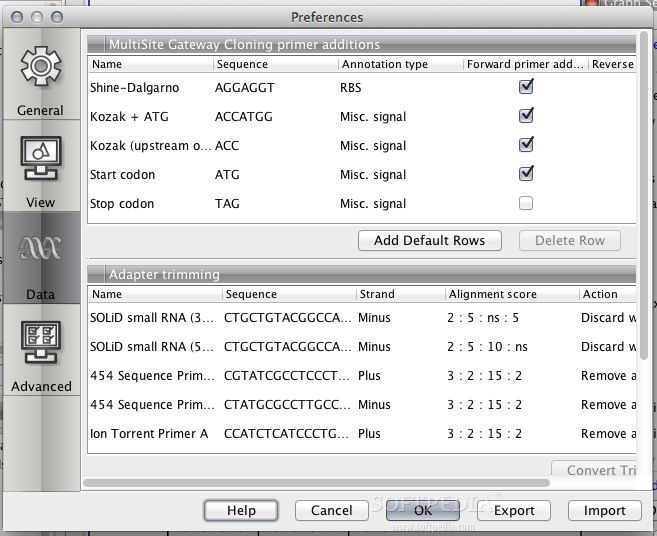

Moreover, this technology allows culture-independent testing from complex polymicrobial samples to detect and identify several pathogens in parallel ( Rossen et al., 2018). With the continuous advancements in sequencing technology over the past decade, next-generation sequencing (NGS) offers several advantages over Sanger sequencing, including a higher resolution and accuracy in identifying microbial pathogens ( MacCannell, 2016 Motro and Moran-Gilad, 2017). Furthermore, Sanger sequencing, which is generally used for 16S rRNA gene sequencing, is challenging in complex, polymicrobial samples ( Deurenberg et al., 2017). the 16S rRNA genes of which share >99% sequence identity ( Devanga Ragupathi et al., 2017). This method also fails to distinguish certain species, as described for Escherichia coli and Shigella spp. For example, species of the Streptococcus mitis group, including Streptococcus pneumoniae, are almost indistinguishable from each other on the basis of their 16S rRNA genes, having 99–100% sequence similarities ( Petti, 2007 Lal et al., 2011). However, this method does not always allow to identify bacteria to the species level due to high sequence similarities between some species ( Deurenberg et al., 2017). The 16S rRNA gene, ∼1.5 kilobase (kb) in length, has proven to be a useful molecular target since it is present in all bacteria, either as a single copy or in multiple copies, and it is highly conserved over time within a species ( Petti, 2007 Sabat et al., 2017). As a complementary approach to culture, sequencing of the 16S rRNA gene has emerged as an accurate and faster method widely used for bacterial identification ( Petti, 2007 Srinivasan et al., 2015). However, it can take days to weeks to successfully culture bacteria, as some clinically relevant bacteria are slow-growing, difficult to grow, fastidious or sometimes even non-culturable ( Didelot et al., 2012 Salipante et al., 2013). The conventional culture has long been considered the gold standard for bacterial identification. Although the in-house database requires more sequence entries to improve the sensitivity, the combination of de novo assembly and BLAST currently appears to be the optimal approach for data analysis.Ĭlinical microbiology strives to improve patient care by rapidly identifying and characterizing microbial pathogens in patient samples to establish a correct diagnosis and to ensure optimal treatment and infection prevention. Mapping was the slowest and most laborious data analysis approach with a sensitivity of 60%, whereas OTU clustering was the least laborious approach with 70% sensitivity. De novo assembly followed by BLAST using the in-house database was superior to the other methods, resulting in the shortest turnaround time (2 h and 5 min), approximately 2 h less than OTU clustering and 4.5 h less than mapping, and a sensitivity of 80%. We compared speed and diagnostic accuracy of different data analysis approaches: de novo assembly followed by Basic Local Alignment Search Tool (BLAST), operational taxonomic unit (OTU) clustering, or mapping using an in-house developed 16S–23S rRNA encoding region database for the identification of bacterial species. Therefore, a better, faster, and stronger approach is needed for NGS data analysis of the 16S–23S rRNA encoding region. However, data analysis is laborious and time-consuming and a database for the complete 16S–23S rRNA encoding region is not available. Recently, next generation sequencing (NGS) of the 16S–23S rRNA encoding region has been proposed for reliable identification of pathogens directly from patient samples. Although Sanger sequencing of the 16S ribosomal RNA (rRNA) gene is used as a molecular method, species identification and discrimination is not always achievable for bacteria as their 16S rRNA genes have sometimes high sequence homology. Rapid and reliable identification of bacterial pathogens directly from patient samples is required for optimizing antimicrobial therapy. 2Department of Medical Microbiology, Certe, Groningen, Netherlands.1Department of Medical Microbiology and Infection Prevention, University Medical Center Groningen, University of Groningen, Groningen, Netherlands.Friedrich 1, Mirjam Kooistra-Smid 1,2, Bhanu Sinha 1, John W. Wiersma 1, Evert van Zanten 2, Guido Wisselink 2, Alex W. Nilay Peker 1†, Sharron Garcia-Croes 1†, Brigitte Dijkhuizen 1, Henry H.


 0 kommentar(er)
0 kommentar(er)
